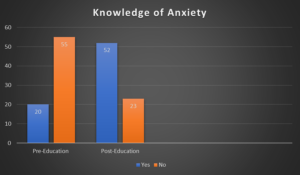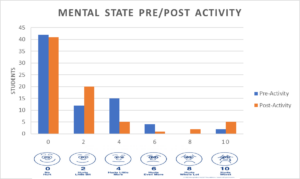Haley Hunter, Craig Smith, Bailey Kloosterman, Ashton Bartlett, Zarren Quaisie, Samantha Fogleman, Robert Hair, & Kamryn Ordes
Dr. Shannon Rumsey (RN) – NURS 417
Marsing School District
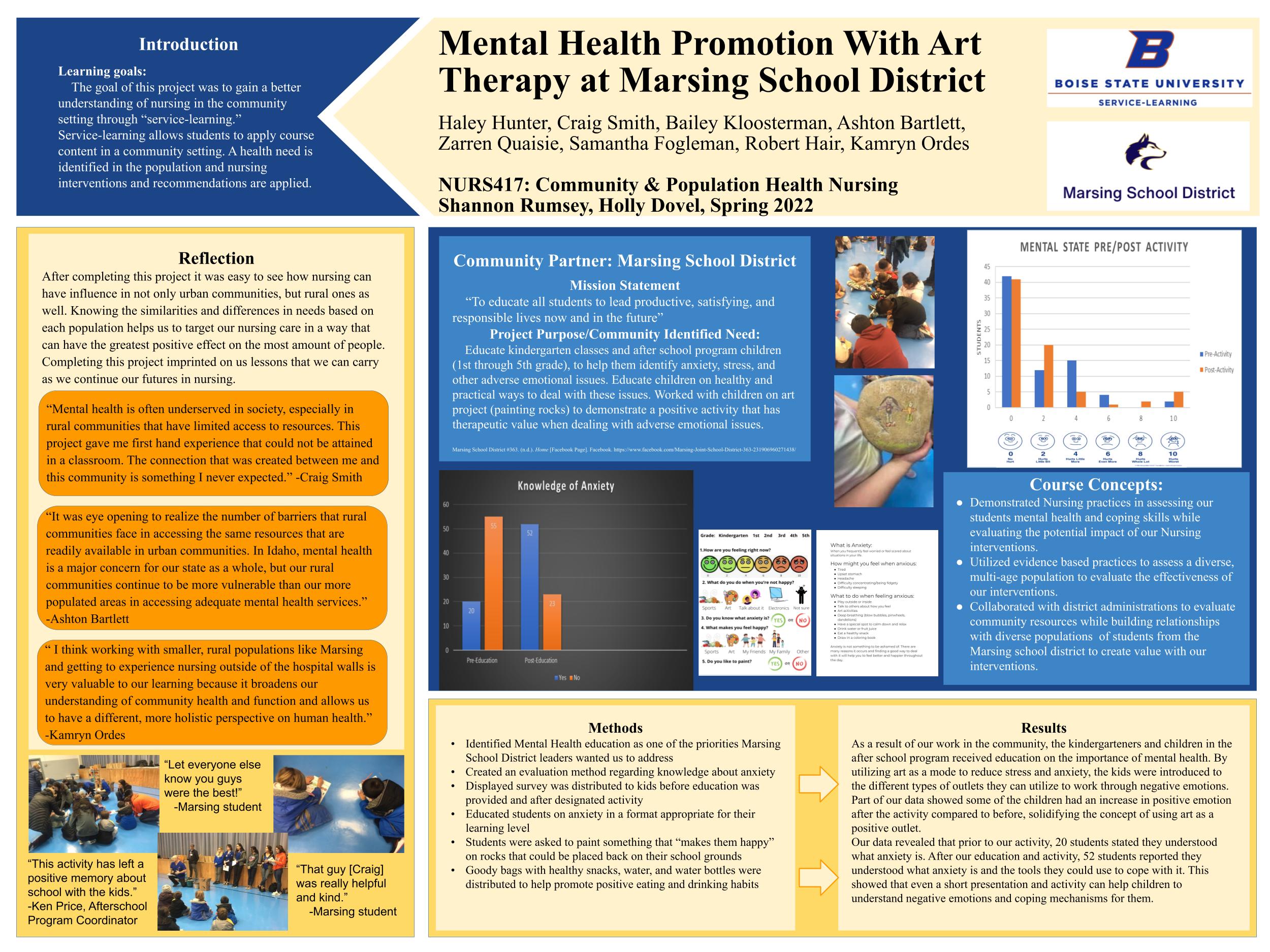
Introduction
Learning Goals:
The goal of this project was to gain a better understanding of nursing in the community setting through “service-learning.” Service-learning allows students to apply course content in a community setting. A health need is identified in the population and nursing interventions and recommendations are applied.
Reflection
After completing this project it was easy to see how nursing can have influence in not only urban communities, but rural ones as well. Knowing the similarities and differences in needs based on each population helps us to target our nursing care in a way that can have the greatest positive effect on the most amount of people. Completing this project imprinted on us lessons that we can carry as we continue our futures in nursing.
“Mental health is often underserved in society, especially in rural communities that have limited access to resources. This project gave me first hand experience that could not be attained in a classroom. The connection that was created between me and this community is something I never expected.” -Craig Smith
“It was eye opening to realize the number of barriers that rural communities face in accessing the same resources that are readily available in urban communities. In Idaho, mental health is a major concern for our state as a whole, but our rural communities continue to be more vulnerable than our more populated areas in accessing adequate mental health services.” -Ashton Bartlett
“I think working with smaller, rural populations like Marsing and getting to experience nursing outside of the hospital walls is very valuable to our learning because it broadens our understanding of community health and function and allows us to have a different, more holistic perspective on human health.” -Kamryn Ordes


“This activity has left a positive memory about school with the kids.” -Ken Price, Afterschool Program Coordinator

“Let everyone else know you guys were the best!” -Marsing student
“That guy [Craig] was really helpful and kind.” -Marsing student
Community Partner: Marsing School District
Mission Statement:
“To educate all students to lead productive, satisfying, and responsible lives now and in the future”
Project Purpose:
Educate kindergarten classes and after school program children (1st through 5th grade), to help them identify anxiety, stress, and other adverse emotional issues. Educate children on healthy and practical ways to deal with these issues. Worked with children on art project (painting rocks) to demonstrate a positive activity that has therapeutic value when dealing with adverse emotional issues.


Course Concepts
- Demonstrated Nursing practices in assessing our students mental health and coping skills while evaluating the potential impact of our Nursing interventions.
- Utilized evidence based practices to assess a multi-age population to evaluate the effectiveness of our interventions.
- Collaborated with district administrations to evaluate community resources while building relationships with different groups of students from the Marsing school district to create value with our interventions.
Methods
- Identified Mental Health education as one of the priorities Marsing School District leaders wanted us to address
- Created an evaluation method regarding knowledge about anxiety
- Displayed survey was distributed to kids before education was provided and after designated activity
- Educated students on anxiety in a format appropriate for their learning level
- Students were asked to paint something that “makes them happy” on rocks that could be placed back on their school grounds
- Goody bags with healthy snacks, water, and water bottles were distributed to help promote positive eating and drinking habits
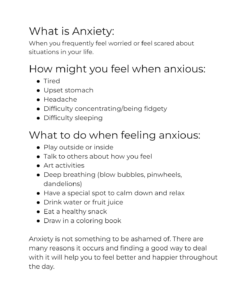
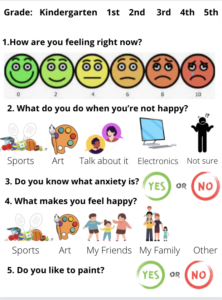
Results
As a result of our work in the community, the kindergarteners and children in the after school program received education on the importance of mental health. By utilizing art as a mode to reduce stress and anxiety, the kids were introduced to the different types of outlets they can utilize to work through negative emotions. Part of our data showed some of the children had an increase in positive emotion after the activity compared to before, solidifying the concept of using art as a positive outlet.
Our data revealed that prior to our activity, 20 students stated they understood what anxiety is. After our education and activity, 52 students reported they understood what anxiety is and the tools they could use to cope with it. This showed that even a short presentation and activity can help children to understand negative emotions and coping mechanisms for them.
